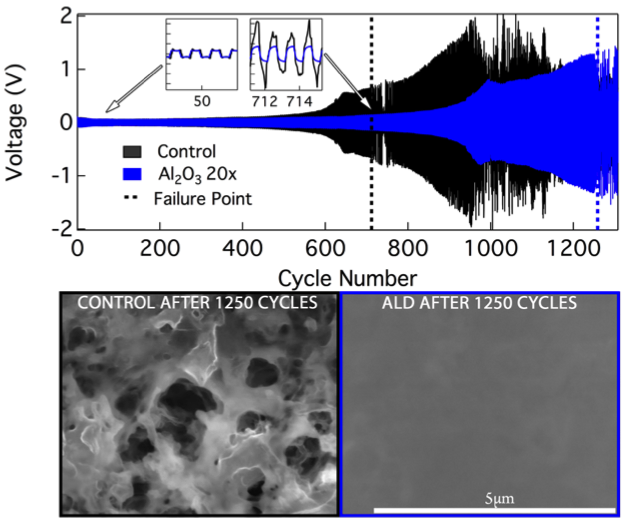
Scientific Achievement
Li metal foil electrodes treated with ultrathin (~2nm) Al2O3 layers, using Atomic Layer Deposition (ALD), prevent dendrite formation and double the lifetime of the anode before failure under both, galvanostatic deep discharge conditions and cyclic plating/stripping of symmetric Li-Li cells.
Significance and Impact
This study demonstrates the importance of interfacial tuning and the unique capability of ALD treatments to precisely control composition and behavior at electrode-electrolyte and electrode-SEI interfaces, thereby enabling Li metal anode use in next-generation Li-S batteries.
Research Details
- Results show that Al2O3 ALD coatings can enable the deep discharge of Li metal, such that nearly 75% of the .75mm electrode can be utilized (>100mAh/cm2)
- At a current Density of 1mA/cm2, Li metal anode cycle life was increased from 711 to 1259 cycles
- ALD coatings dramatically suppress dendrite growth by creating a more uniform flux of Li ions across the SEI/Electrode interface
Work performed at University of Michigan (JCESR Partner) Kazyak, K.N. Wood, N.P. Dasgupta, Chem. Mater., 2015, 27.
DOI: 10.1021/acs.chemmater.5b02789

